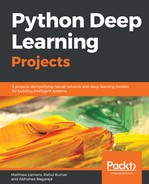Our project has expanded once again based on the good work that we've been doing. We started off working for a restaurant chain to help them classify handwritten digits for a text notification system to alert their waiting guests that their table was ready. Based on this success and when the owners realized that their customers were actually responding to the texts, we were asked to contribute a deep learning solution using natural language processing to accurately classify text into a meaningful sentiment category that would give the owners an indication as to the satisfaction with the dining experience.
This project for next business use case is pretty cool. What we’re being asked to do is to create a natural language pipeline that would power a chatbot for open domain question answering. The (hypothetical) restaurant chain has a website with their menu, history, location, hours, and other information and they would like the added ability for a website visitor to ask a question in a query box and our deep learning NLP chatbot to find the relevant information and present that back. They think that getting the right information back to the website visitor quickly would help drive in-store visits and improve the general customer experience.
Named Entity Recognition (NER) will be the approach we’ll be using and it’ll give us the power we need to quickly classify the input text that we can then match to the relevant content for a response. It’s a great way to take advantage of a large corpus of unstructured data that changes without using hard-coded heuristics.
In this chapter, we will learn about the building blocks of the NLP model like pre-process, tokenize, and tagging parts of speech. We use this understanding to build a system able to read an unstructured text, to comprehend an answer for a specific question. We also describe how to include this deep learning component in a classic NLP pipeline to retreive information, to provide an open-domain question answering system not requiring a structured knowledge base.
We will :
- Build a basic FAQ based chatbot using statistical modeling in a framework capable of detecting intents and entities for Open-domain question-answering.
- Learn to generate dense representation of sentences.
- Build a Document Reader for extracting answers from unstructured text.
- Learn how to integrate deep learning models into a classic NLP pipeline.
Build a chat bot which understands the context (intent) and can also extract the entities, we need an NLP pipeline which can perform intent classification along with NER extraction to then provide an accurate response.
Skills learned will be:
You will learn how to build an open-domain question answering system using a classic NLP pipeline, with a document reader component using deep learning techniques to generate sentence representations.
Let's get started!
